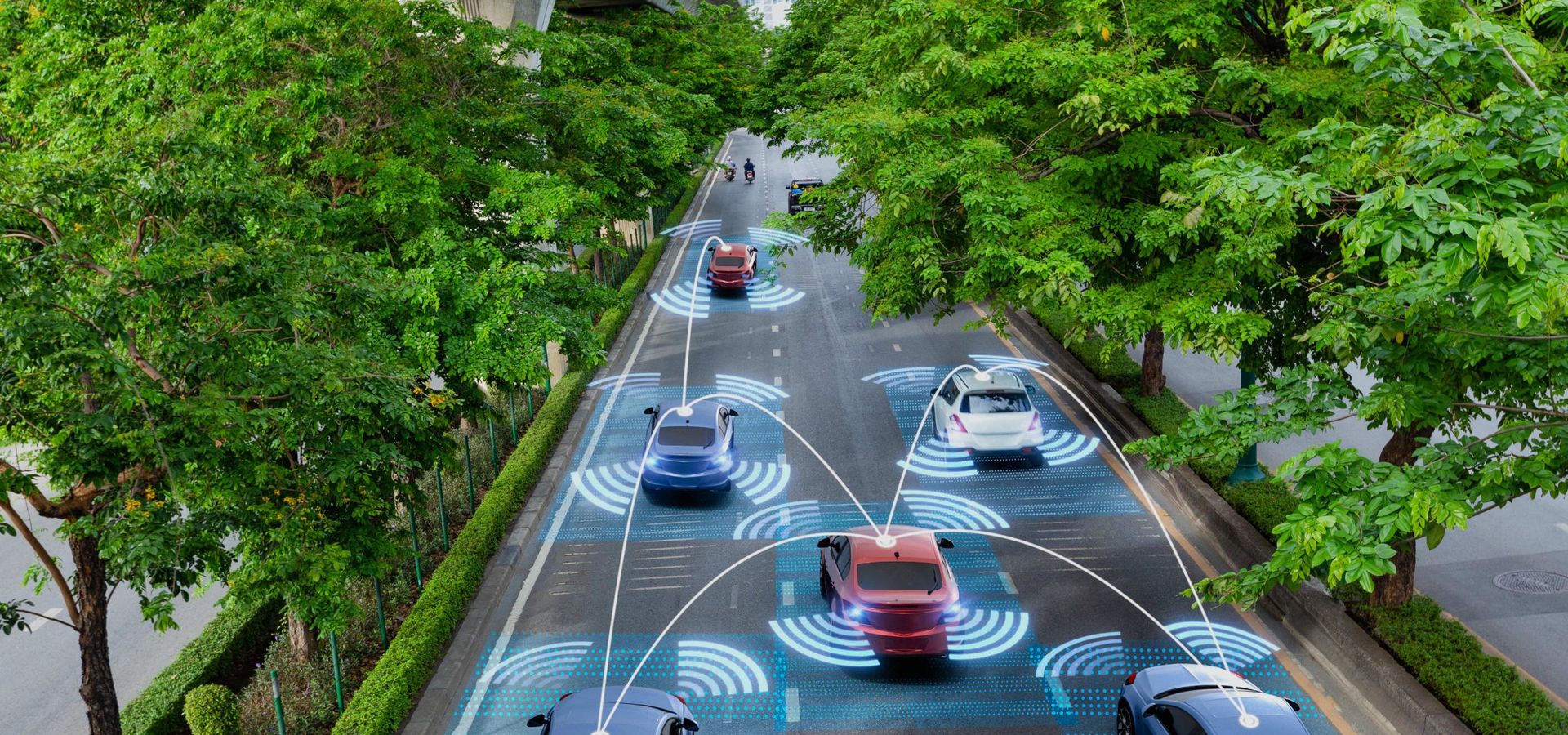We live in a world where there are more internet of things (IoT) devices than people. These devices are interconnected through wired and wireless systems, which allows them to exchange information with no or minimal human assistance. This is called machine-to-machine (M2M) communication.
M2M facts and figures
The concept of M2M first appeared in 1968 when Theodore Paraskevakos created a system that communicated telephone numbers to machines, the basis for a modern caller ID system. Since then, M2M technology has evolved rapidly to become one of the major forces driving the internet of things development and the most dynamically growing connected technology in the market.
There are constantly new advancements in the area of IoT software development, and businesses are seeing the value in expanding their use of M2M technology. M2M is currently used to improve productivity and efficiency in various verticals, including transportation, logistics, manufacturing, energy, robotics, and healthcare.
The M2M market is expected to only get bigger, at an average CAGR across verticals of 19% by 2022, according to Cisco. The key drivers of this growth include connected ecosystems such as homes, cars, and workplaces.
The value and opportunities of M2M
With notable recent improvements in internet connection and speed, M2M technology is effectively providing consumers with telecom solutions. Also responsible for the development of the market is major price drops due to improved wireless connectivity. With these new advancements, organizations in various sectors can see many benefits of adopting M2M technologies.
Take the example of the transportation and logistics industry. The ability of connected trucks to communicate with each other using embedded sensors, RFID, and a wireless network makes smart fleet and asset tracking possible. It allows companies to view details about the location of any asset that their business owns, manufactures, or manages.
M2M provides new opportunities for the utilities sector as well, mainly through smart metering solutions. A smart meter measures how much energy, water, or gas is consumed, and communicates that data to a smart grid, thereby contributing to resource consumption control and optimization.
Further, businesses receive access to the data that lets them improve operations and drive customer engagement. Through enabling new cars with M2M sensors, for example, automotive manufacturers and dealers may tell their customers when engines or other components need replacement. This allows them to provide customer service and care on a whole new level.
Welcome to the future of M2M
The business demand for deeper connectivity and M2M communication keeps growing, prompted by the two key trends driving this widespread adoption: falling costs of sensors and the ubiquity of low-cost wireless networks, which makes machine-to-machine technology more affordable. Those businesses who catch up and make efficient use of M2M now will be the first to see tremendous benefits from it, and Itransition is always here to help with expert-level consulting and implementation.
Faster response times
In M2M communications, embedded sensors gather real-time information and send it to a central point over the internet. The instant transmission of information enables faster response times and quicker business decisions. This can be particularly useful in emergencies.
Within the internet of medical things, patient monitoring systems can raise an alarm at the nurses’ station if a patient shows early signs of a cardiac event. Thus, doctors and nurses will be able to react very swiftly to the patient’s critical health conditions and provide timely medical assistance to help save lives. M2M makes it possible to achieve even faster emergency response times when it’s integrated throughout the hospital by automatically unlocking interior doors that would normally require a key card.
Yet another example of how M2M technology contributes to faster response times is in the utilities industry, particularly in water leak detection and repair. In-pipe sensors monitor water flows and help detect leaks. If a leak arises, they don’t only send an alert to service personnel but also communicate this information to the electrical system that automatically turns off the power to prevent electrocution.
Enhanced products and services
Many organizations say enhancing their existing products or services is a major or top expectation from M2M adoption. Gaining greater insight into their business operations can help organizations identify possible areas for improvement.
In healthcare, one of the biggest opportunities for M2M technology to enhance services is accurate medication dispensing. A smart pill dispenser automatically releases the required prescription at the right time. This way, people who need to take various medications every day will be able to get their prescriptions without visiting the doctor.
In industrial environments, the machines’ ability to interact with each other may result in better interoperability. Machines can decide what action is the best to take based on the information collected from other devices in the factory and specific patterns programmed into the operating system by engineers. For example, machines can decide to pause upon the completion of a production task.
The application of M2M and IoT in the retail industry allows for better POS data, as well as better shopping experiences through personalized digital signage. Digital signage is updated in real-time thanks to M2M technology and therefore can be used, for example, in shopping malls as a display to help users find their path on a map or to promote products in an interactive way.
Cost savings
Cost savings is another important factor for M2M adoption. Major organizations around the globe have already experienced considerable financial gains from their M2M deployments.
The use of M2M technology helps businesses automate much of their processes, thus improving effectiveness at a lower cost. For example, organizations can monitor their assets remotely, thus saving a lot of time and effort.
Smart factories may use M2M for predictive maintenance. Sensors on their equipment would send an alert at the very first sign of a problem and schedule a repair before it breaks. By being able to schedule machine servicing during convenient times and reducing system failures, the machines are able to be much more productive during the hours they are needed. This way, manufacturers can reduce their costs by minimizing equipment maintenance and downtime.
Moreover, M2M may help factories cut energy use and associated costs by connecting all machines. If one machine fails, the other machines can immediately pause the production to reduce energy consumption.
M2M solutions can now be found in the agriculture industry as well, reducing the human effort in areas such as field cultivation and animal monitoring. One interesting example is a cow monitoring solution, which measures the cattle’s vital data. It then notifies the farmer instantly when a cow begins to give birth or when one is in heat so that the veterinarian can be promptly called. The result is a higher reproduction rate for the herd and more profit for the farmers.
Minimized resource consumption and losses
Another benefit comes from the machines being able to take over tasks that previously took humans much time and energy. For example, a vending machine can take inventory itself and send that data back to the company. This eliminates the need for an employee to make rounds to check stock and manually order replacement items. Reducing or more efficiently using resources is just one way M2M can help provide companies with returns on investments.
This technology can also help reduce losses. For instance, it can monitor the temperature in a freezer truck and alert the driver to anything unusual. The driver can then pull over and make repairs as needed, saving the load from potentially being a complete loss.
Increased revenue
M2M can bring about new revenue opportunities by tracking and compiling consumer data. If retail stores, for example, are aware of their customers’ buying trends, they are more able to adapt their stocked items and associated services to meet those needs. The ultimate goal in this is to make the customer feel seen and understood, raising the likelihood of them returning to that retailer and becoming, or staying, a loyal customer. By understanding the current trends, retailers can provide for them and keep gaining new customers.
Welcome to the future of M2M
The business demand for deeper connectivity and M2M communication keeps growing, prompted by the two key trends driving this widespread adoption: falling costs of sensors and the ubiquity of low-cost wireless networks, which makes machine-to-machine technology more affordable. Those businesses who catch up and make efficient use of M2M now will be the first to see tremendous benefits from it, and Itransition is always here to help with expert-level consulting and implementation.



